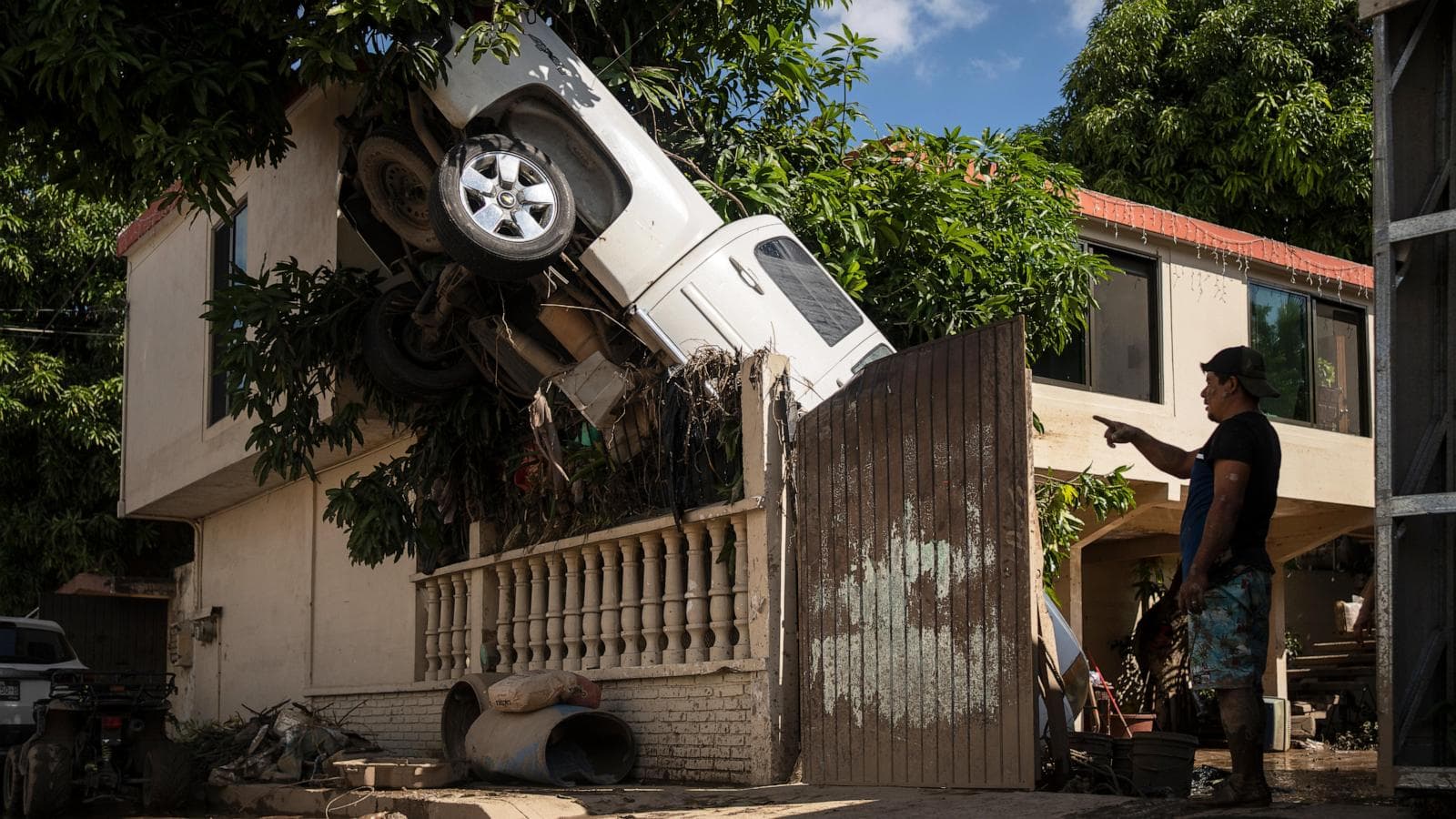Loading News Article...
We're loading the full news article for you. This includes the article content, images, author information, and related articles.
We're loading the full news article for you. This includes the article content, images, author information, and related articles.
Torrential rains have triggered widespread flooding and landslides across Mexico, claiming at least 44 lives and prompting President Claudia Sheinbaum to initiate an urgent, coordinated emergency response plan with affected state governors.

The death toll from torrential rains, widespread flooding, and landslides across Mexico has risen to at least 44 as of Sunday, October 12, 2025, East Africa Time (EAT). President Claudia Sheinbaum has convened governors from the hardest-hit states to direct a comprehensive emergency response plan. The National Coordination of Civil Protection reported that Veracruz state on the Gulf Coast recorded 18 fatalities, Hidalgo state, north of Mexico City, had 16 deaths, and Puebla, east of Mexico City, reported nine. Additionally, a child in the central state of Querétaro died after being caught in a landslide.
Mexico is prone to severe weather events, including tropical storms and hurricanes, which frequently lead to flooding and landslides, particularly in coastal and mountainous regions. The current crisis has seen President Sheinbaum actively engaging with affected communities, including a visit to Poza Rica, Veracruz state, on Sunday, October 12, 2025, EAT. She affirmed the government's commitment, stating, "We will not leave anyone helpless."
The Mexican government, through its National Coordination of Civil Protection, is responsible for disaster preparedness and response. President Sheinbaum's immediate action to convene governors underscores a high-level commitment to a coordinated federal and state response. This approach aligns with her administration's broader health strategy, which emphasizes disease prevention and patient-centered care, as discussed in a meeting with US officials in October 2024 to enhance joint emergency response capabilities.
Hundreds of army personnel, police officers, and firefighters are conducting rescue operations and establishing temporary shelters in Veracruz and Puebla, offering food and medical assistance to displaced residents. Many communities in Veracruz remain cut off, with air bridges being established to deliver essential supplies and attend to the sick. Thousands of residents across the country are still without running water or electricity.
The death toll remains fluid and could still rise as rescue teams continue to search through villages buried in mud and debris. The widespread damage to infrastructure, including homes and roads, poses significant challenges for recovery efforts. The lack of running water and electricity for thousands of residents further exacerbates the humanitarian crisis.
While the immediate cause of the heavy rains has been attributed to Tropical Storms Priscilla and Raymond, the long-term implications of climate change on the frequency and intensity of such events in Mexico remain a subject of ongoing scientific study and public debate.
President Sheinbaum's administration is conducting a census of affected individuals to facilitate the distribution of aid. Rescue and relief operations are ongoing, with efforts focused on reaching isolated communities and restoring essential services.
The focus will be on the effectiveness of the coordinated emergency response, the speed of recovery efforts, and the provision of aid to those displaced and affected. The potential for further rainfall and its impact on already saturated areas will also be closely monitored.
Kenya, like many nations, faces its own challenges with extreme weather events, often highlighting the need for robust disaster preparedness and climate change adaptation strategies.
Keep the conversation in one place—threads here stay linked to the story and in the forums.
Other hot threads
E-sports and Gaming Community in Kenya
Active 6 months ago
Popular Recreational Activities Across Counties
Active 6 months ago
Investing in Youth Sports Development Programs
Active 6 months ago
The Role of Technology in Modern Agriculture (AgriTech)
Active 6 months ago